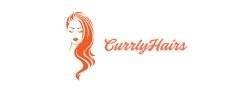There are four top-level categories, and it’s common to find different curl patterns in different sections of your skull. The method you use to manage your hair types commonly depends on your hair type and personal preference.
One minute, it is great, and the next, humidity or rain can change everything. And let’s be honest, your hair might not always fit into what others call best hair, but that doesn’t matter. When you better understand your hair type, curl pattern, spacing in the material, and thickness, you can treat it more effectively, because taking care of your hair is also a part of loving yourself.
How to Identify Your Hair Types?
The traits of your hair are mainly influenced by the form of your hair type and the degree of its curliness. The natural curl pattern is present in your DNA, while you can alter your curl pattern through heat or chemical treatments. Daily, your hair undergoes its growth cycle, with genetic traits playing a significant role.
How many different Hair types are there?
1: Straight
2: Wavy
3: Curly
4: Coily
These classifications are further divided into subcategories based on the degree. It may seem straightforward, but similar to many efforts to categorize human traits, it is quite complex. Many individuals possess a mix of various types.
How to Style & Care for Your Unique Hair Types?
Type 1: Straight Hair Type
Type 1 hair lacks any natural curl. This hair type tends to get oily easily, so numerous stylists suggest examining product labels to confirm they won’t contribute additional oil to your hair. For straight or fine hair, I would suggest using texture sprays instead, she explained. Dry shampoo is also a wise choice.

Washing your hair too often can help the skull produce more oil, making dry shampoo a right option for individuals with straight, oily hair. According to many clients who come to salons with photos from Instagram or Pinterest of their desired styles, but highlight the significance of discussing options with their stylist for their professional input. She mentioned. Currently, one popular look is a chin-length blunt cut, which is an excellent match for straight hair.
Type 2: Wavy Hair Types
Hair Type 2A:
The typical appearance of type 2 hair is a soft, messy texture. To maintain the shape of those waves and prevent them from becoming flat, steer clear of oil-based or creamy products. Instead, enhance the roots with a lightweight mousse or apply a gel to better define your waves.
Type 2B:
Type 2B hair features curls that start from the middle and extend to the tips. While it may take a bit more work to straighten, achieving a beachy effect with a spray of saltwater is relatively simple.
Type 2B is perfect for the balayage trend, where stylists apply color by hand to the top layer of hair.“ When clients bring in balayage pictures, they always draw wavy hair, naturally add area curls to add drop. Wavy-haired women find it effortless to achieve this style.

Type 2C:
The most distinct S-shaped waves are categorized as type 2C. Lovelace suggests utilizing a diffuser, a textured attachment that connects to your blow dryer, to minimize frizz. “I strongly support the use of products, particularly when dealing with environmental elements like hard water and saltwater,” Lovelace remarked. “Anti-humidity products are incredibly important.” Many lightweight sprays now include an anti-humidity part along with hydration. To keep your hair healthy and keep curls at arm, try to limit the use of uncontrolled heat during styling, and if you decide to use hot tools, ensure you apply a heat protectant beforehand.
Type 3: Curly Hair Type
Type 3A:
The circumference of these curls is slightly wider than the larger end of a taper candle. A key styling tip: Brushing this hair type can compromise curl definition and contribute to frizz. To check poofy hair, avoid napping your curls once they have dried. Her top advice? Skip the ponytail. This hair loss occurs because the weight places pressure on the hair follicles over extended periods.
Type 3B:
Curls emerge from the roots and exhibit significant volume. Carrying in their real coil shape, thrills regularly require moisture. Avoid curl products with silicone and sulfates. While they may deeply manage frizz, theymay deeply manage frizz, they can dry out your hair over time and lead to breakage.

Type 3C:
Rather than combing, which can result in curl and breakage, use a leave-in conditioner and gently comb through wet hair by applying your fingers. The American Academy of Dermatology recommends that you allow your hair to air-dry rather than using a hair dryer.
4: Coily Hair Type
Coily hair, classified as type 4 hair, is made up of very hard curls. It is the most delicate hair type and often appears shorter due to shrinkage. Coily hair manages to be dry because natural oils have a powerful time moving from the skull down the hair shaft. It needs extra moisture, gentle handling, and protective styling to remain healthy. When right cared for, coily hair is talented, beautiful, and full of volume.
Type 4A:
It requires a gentle hold and demands a fair deal of moisture. But gaining moisture doesn’t always require the use of oils. Big conditioning masks, butters, and creams are excellent choices for keeping hair healthy. The Curl Whisperer salon guides against protective styles such as weaves and Yarn. Some stylists help styles that tuck away silky ends to protect them as they grow. Castillo argues that these styles can often be more damaging than beneficial. When hair is hidden away, it misses out on essential conditioning treatments. When your hair has been in a protective style for weeks, the curl definition is entirely lost.
Type 4B:
The curls in 4B hair form a zig-zag style. A well-known technique for defining and enhancing these curls is known as shingling. Shingling starts with damp hair. Apply fingertips to gently nice while applying ing great quantity of leave-in conditioner to hydrate nd nourish, then divide your hair into four sections. Apply curl cream or gel throughout the length of each curl, twisting the strands around your index finger as you progress.

Type 4C:
The coils of 4C hair are the tightest and most allowing to damage. Roughly combing can easily lead to breakage, making it setting to nourish the hair routinely with rich conditioners. Coconut oils are popular, next to butter creams. Materials are moving away from shampoo in favor of co-washing, which involves washing the hair with a hydrating conditioner rather than shampoo. In terms of styling, many people with 4C hair hold their natural texture. We are observing the younger generation’s hair. They want their hair and go round, take after the sun, and they’re interested in lively colors, all replacing the health of the hair.
Conclusion
For all that, in case your hair type is straight, wavy, curly, or coily, every type has its distinct structure, requirements, and attraction. Control your hair types. You can select proper products, create a hair care routine, and attain fit, more manageable strands. Celebrating your natural texture, not self-confidence, also aids in caring for your hair most usefully.




